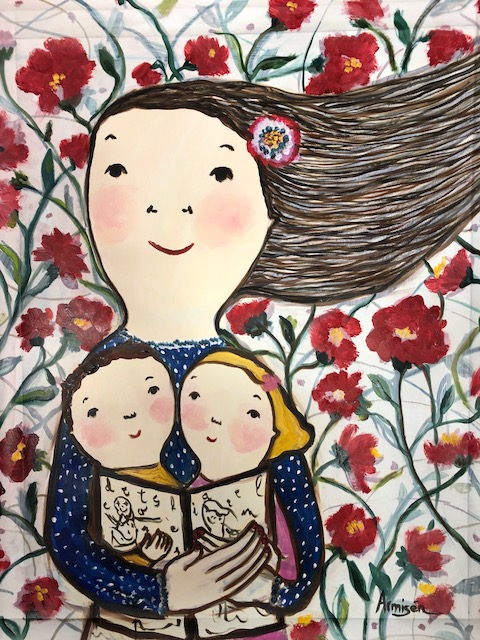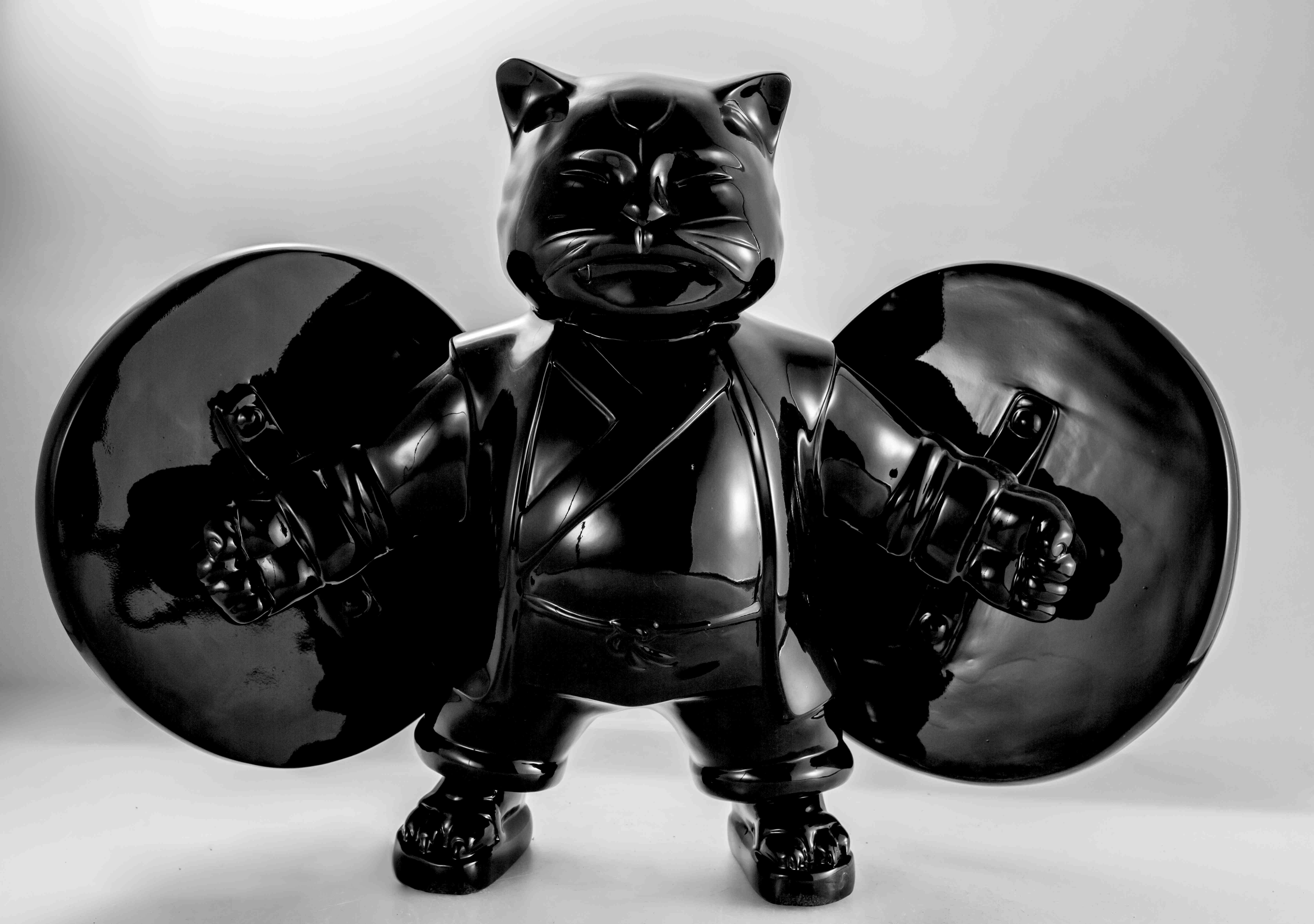
All About Artists
The Beautiful World of Art and Music
Come explore Vani’s beautiful portraits of the world’s most iconic musicians
By Ashley
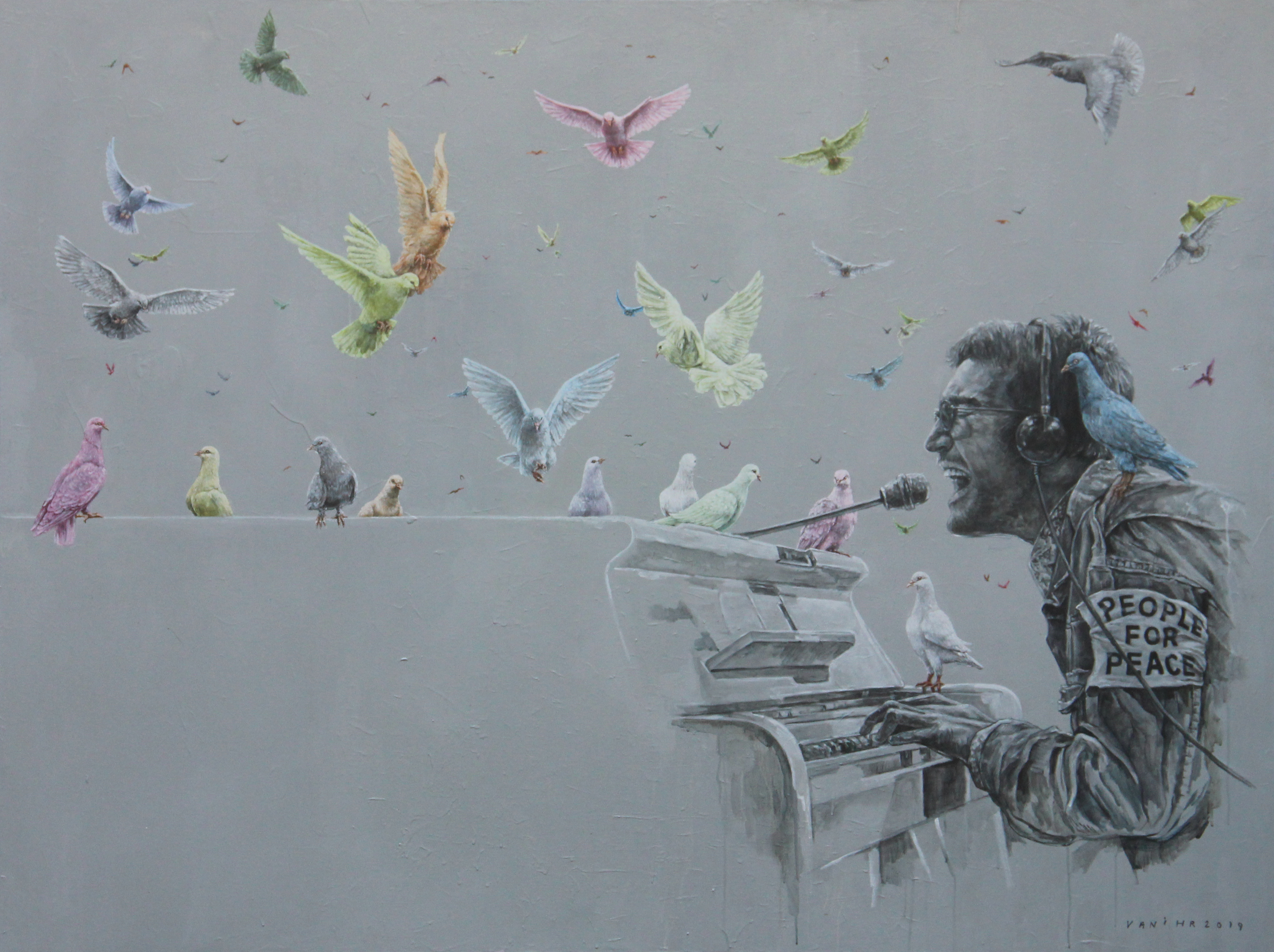
Vani Hidayatur Rahman, Song of Peace (John Lennon), Acrylic on Canvas, 150 x 200 cm
“Peace is not something you wish for; It’s something you make, something you do, something you are, and something you give away” - John Lennon
There is something about music that gravitates us towards it. No matter who you are, there will always be a song that you feel in your bones, or a tune that you just can’t let go. Vani Hidayatur Rahman, an Indonesian artist currently based in Yogyakarta, shares a fascinating relationship with music that he translates to art. With a distinctive and realistic style, Vani imbues a strong story into each of his pieces to address political, social and environmental issues.
As an artist who believes strongly in the power of progress, unity and collaboration, it is no surprise that so many of his works embody the words of the legendary John Lennon. In Song of Peace (John Lennon), Vani has etched an image of John Lennon on his piano, his facial expression revealing ardour and ecstasy as he sings a song of hope. Above him, the birds soaring in the sky represent the spirit of freedom and emancipation from our daily lives. If we truly desire to be people of peace, we need to fight to receive it. In his series of portraits that depict the world’s most iconic musicians, Vani draws an interesting connection between music and visual art - both can change the world.
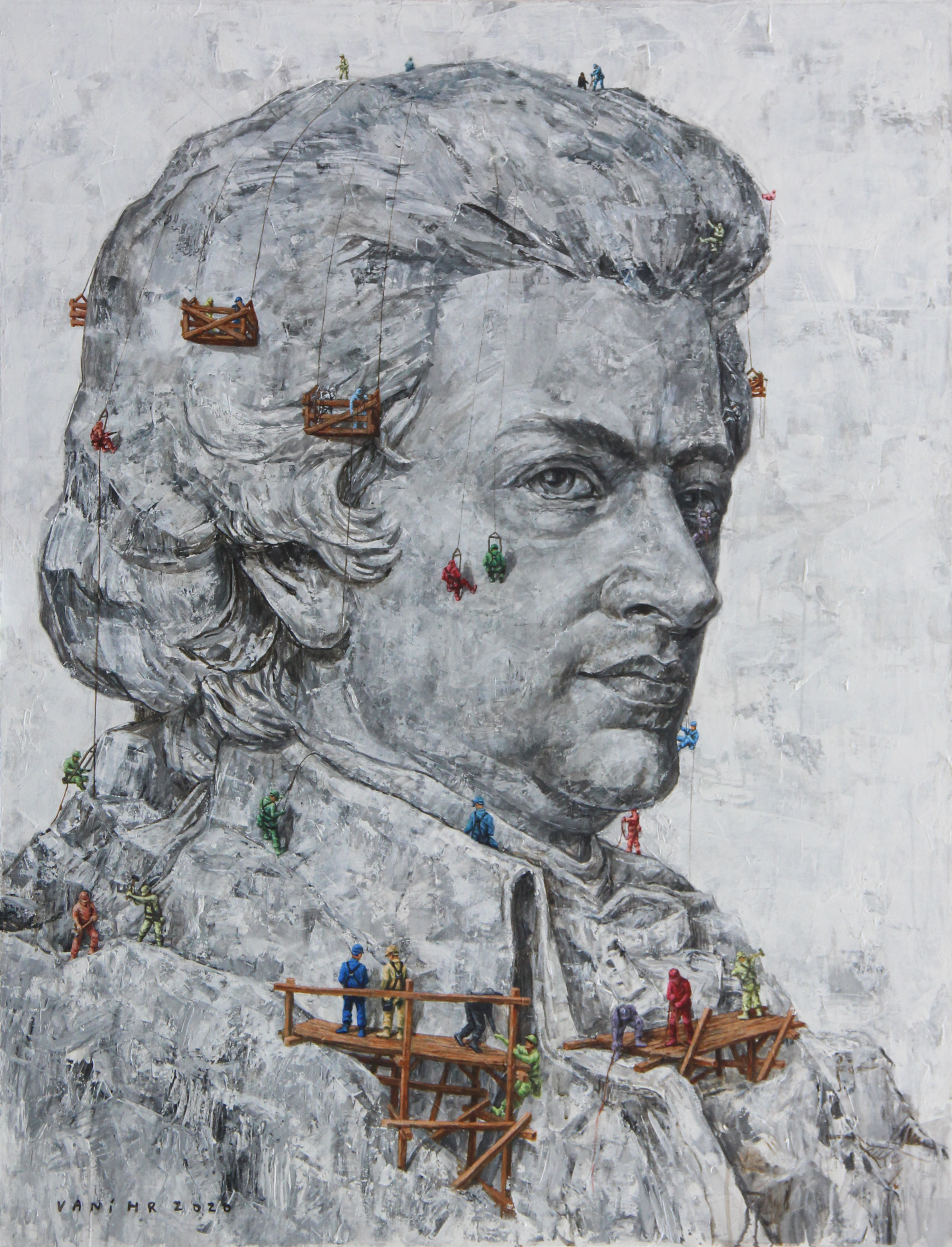
Vani Hidayatur Rahman, The Times They Are A-Changin #10 - Wolfgang Amadeus Mozart, Acrylic on Canvas, 100 x 130 cm
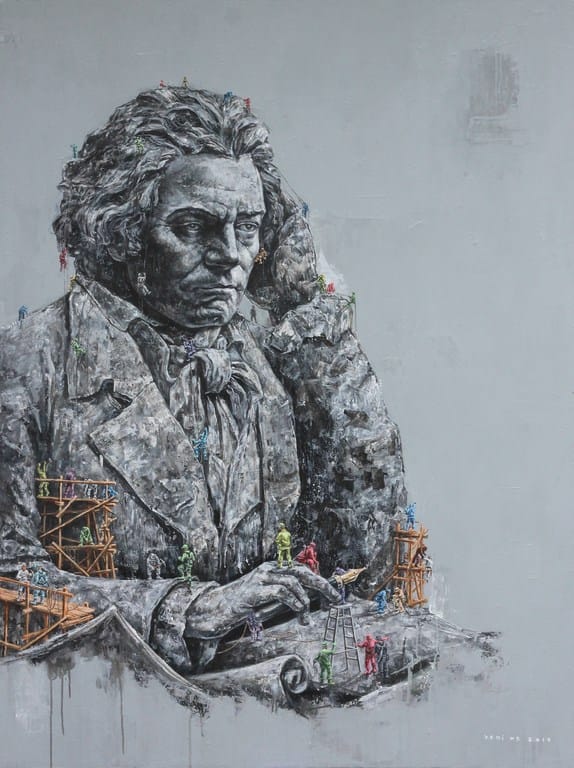
Vani Hidayatur Rahman, Ode to Ludwig Van Beethoven, Acrylic on Canvas, 160 x 120 cm
Beethoven and Mozart, two of the greatest composers in the world, have become synonymous with classical music. In their lifetimes, both composers have written more than 1,000 works combined, with their compositions still performed to this day. To pay homage to these musical geniuses, Mozart's regal features are focused in Vani’s portrait, with his eyes almost challenging the viewer. It is a striking image as little workermen stand on scaffolds, completing Mozart’s majestic bust, yet Mozart’s piercing gaze seems to transfix the viewer’s gaze. On the other hand, Vani’s portrait of Beethoven depicts him holding a golden-tipped pen, his eyes shifting to the side, as if ready to write a new composition.
The symbolic potential of the fountain pen in Vani’s work is powerful as it not only symbolizes knowledge but is also positioned as the most powerful weapon to change the world. Thus, just as Vani’s own paint brush was used to create these paintings, the pen represents humanity’s ability to forge our own future. Vani’s vision of Mozart and Beethoven subverts the world’s perception of their compositions as perfect masterpieces, by visually portraying them as works in progress. No one is flawless, as even Beethoven was heavily inspired by Mozart, composing various variations on Mozart’s theme in his career.
Through his artistic rendering of Mozart and Beethoven, Vani organically links music and art together, visually representing the difficulty of achieving musical perfection. As a theme that runs through most of his work, Vani’s signature style and symbolic aesthetic truly underscores the idea that any ideal state of perfection can only be achieved through constant collaboration, as we build upon each other.
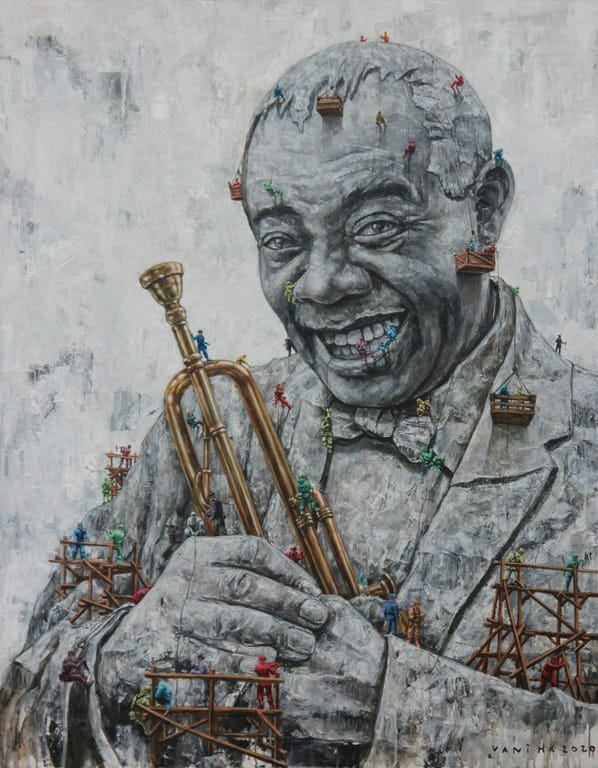
Vani Hidayatur Rahman, The Times They Are A-Changin #9 - Louis, Acrylic on Canvas, 130x100 cm
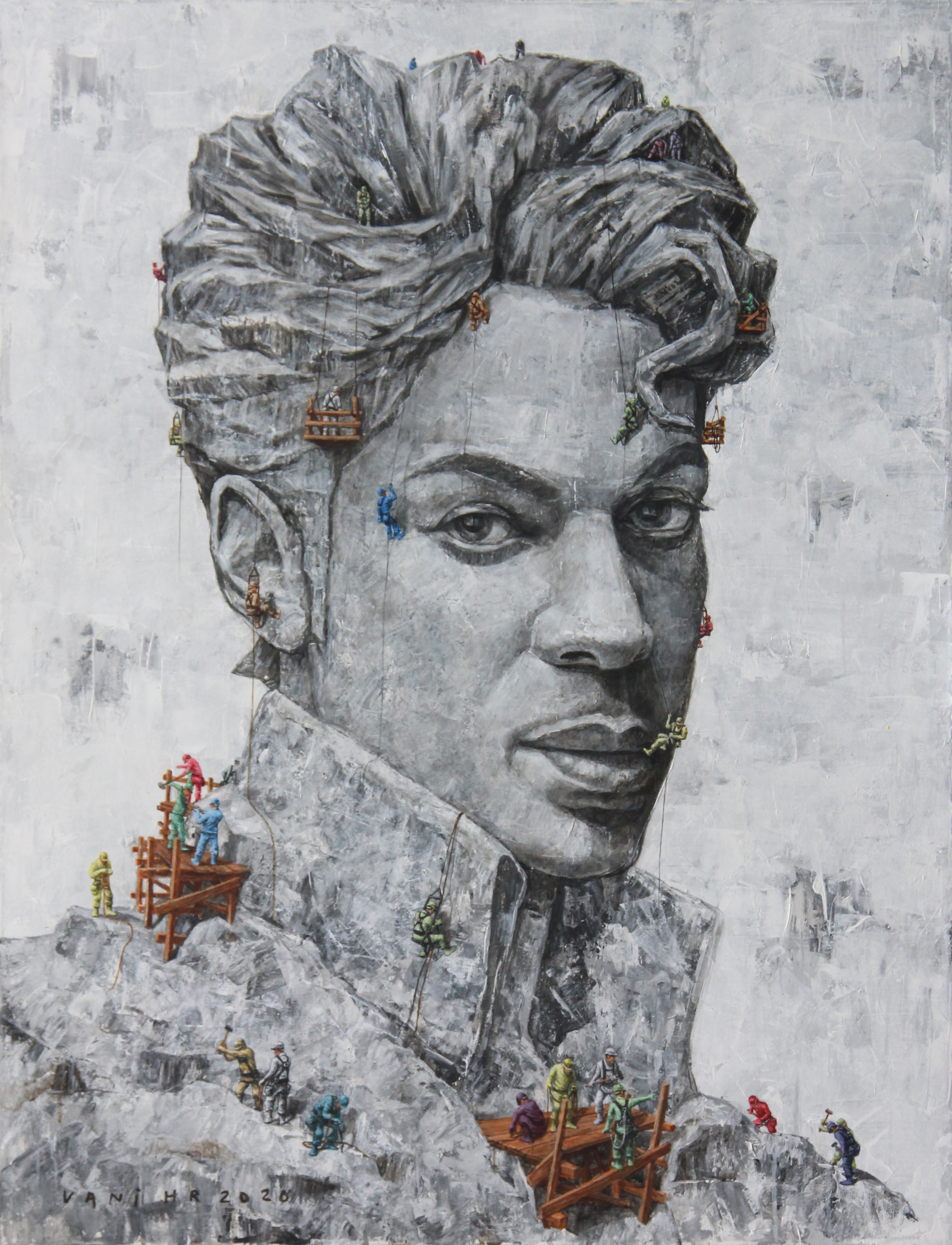
Vani Hidayatur Rahman, The Time They are A-Changin #11 - Prince, Acrylic on Canvas, 100x130 cm
In the next set of musical legends that Vani has chosen to portray, it may seem that both musicians have little in common. However, Louis Arnstrong and Prince, despite their different genre and musical styles prove that music, just like art, can be revolutionary. Louis Armstrong, an American trumpeter and vocalist was an influential figure in Jazz, particularly during the Harlem Renaissance. Prince, an American singer-songwriter, was another influential musician who was a pioneer of a transgressive new musical genre: Minneapolis Sound.
Both portraits by Vani feature Armstrong and Prince staring straight into the viewer’s eyes - with Armstrong holding onto the trumpet that helped him revolutionise Jazz while Prince staring defiantly at the viewer, as if challenging us to question his trailblazing attitudes to music, aesthetics and style. In these portraits too, Vani uses a similar motif of colourful workmen scaling and collaborating on completing the sculpture. However, these dutiful workmen take on a different symbolic meaning for Prince and Armstrong. Instead of serving as a reminder that no single person can be perfect, the workmen in these pieces illustrate that to be truly groundbreaking and innovative, we must realize that we are works-in-progress.
For society to make leaps and bounds in all matters spanning the political, cultural and even environmental, society must work together to achieve the best possible outcome. Thus, in his moving portraits of Armstrong and Prince, Vani's depiction of human collaboration truly embodies the human spirit - we are better when we work together.
"I know that the most joy in my life has come to me from my violin." - Albert Einstein
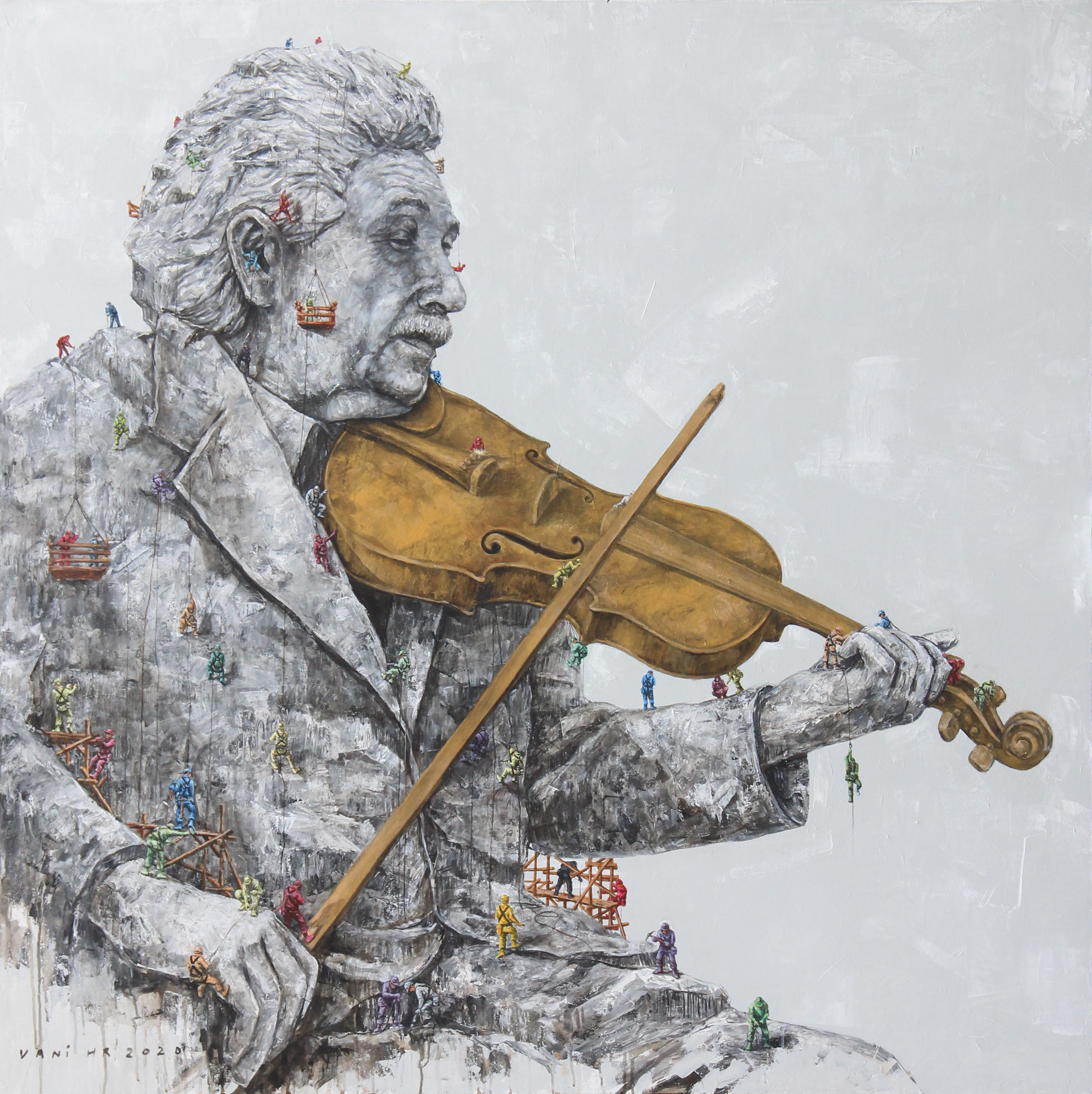
Vani Hidayatur Rahman, Sonata In E=mc2, Acrylic on Canvas, 150x150 cm
Even though Albert Einstein is best known for his contributions to the physical sciences, in this portrait, Vani has depicted Einstein, moved by the beautiful sound of the violin as he plays it. Science or music, art or words - Vani’s visual musings of these musical icons illustrate the interconnectedness of the world, as nothing in this world can exist in isolation. Just as the music from these musical icons have continued to inspire us long after their passing, Vani’s paintings suspend them in a state of progress, and of hope that we as a society can aspire for peace, as long as we put our minds to it. With these paintings, we can look towards a better world.
Contact us for more information on any of the paintings featured in this article and be sure to follow Ode to Art on Facebook and Instagram!


